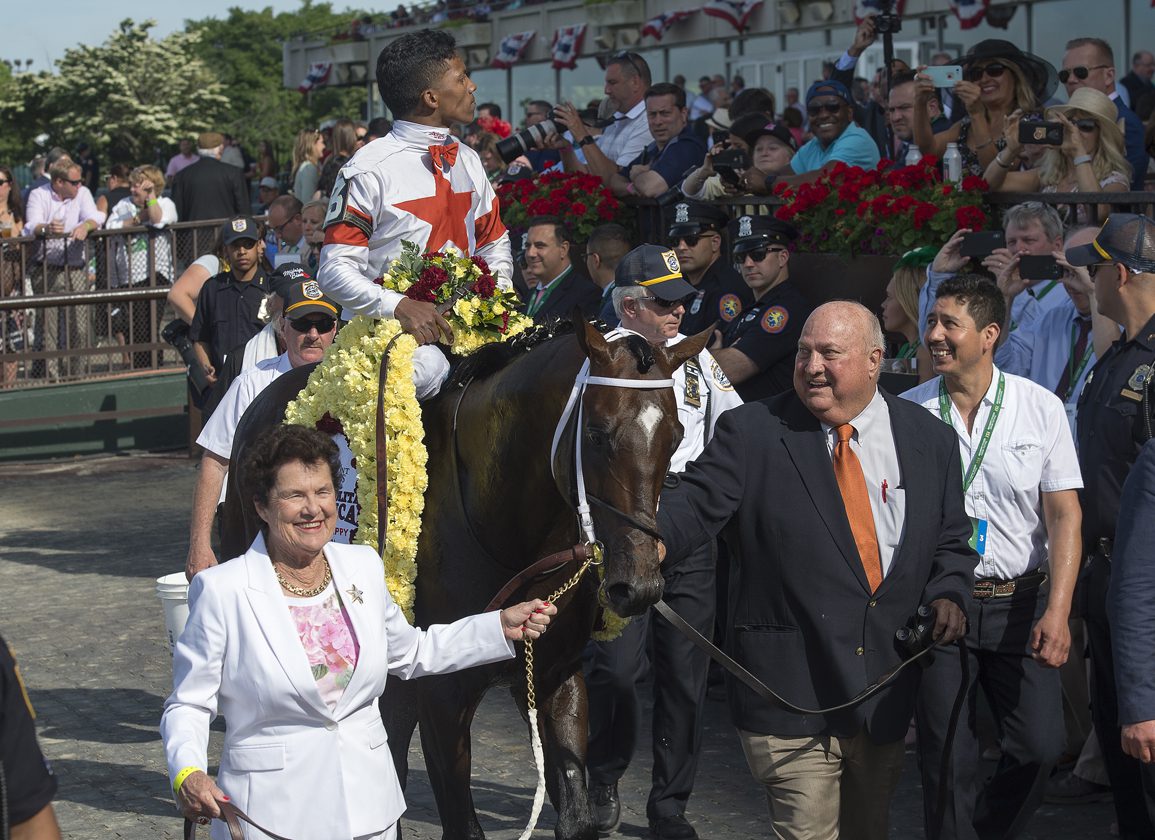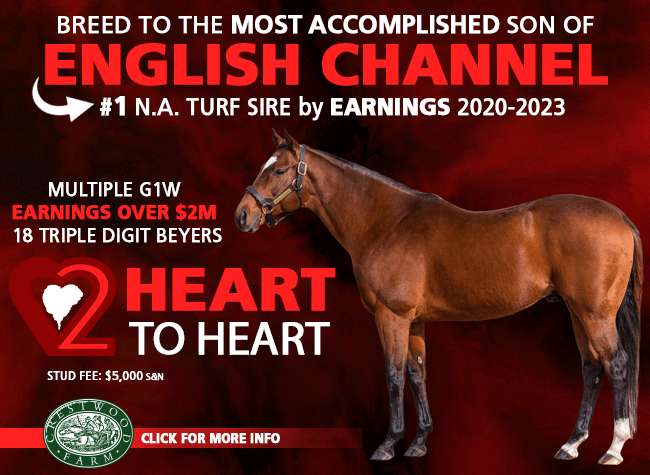By Jessica Martini
The TDN sat down with longtime owner/breeder Bill Heiligbrodt for the next installment in this ongoing series presented in cooperation with the Consignors and Breeders Association (CBA). Through conversations with buyers and sellers, the series looks to contribute to the discussion on radiograph findings and their impact on racetrack success.
Bill and Corinne Heiligbrodt have been in the racing game some 30 years and have enjoyed top-level success with Yaupon (Uncle Mo), winner of the 2021 GI Forego S., as well as Eclipse champion sprinter Mitole (Eskendereya). Both Grade I winners were purchased at the 2-year-olds in training sales, a venue which Bill Heiligbrodt said allows him to add another layer of information to the standard vet report.
“When you buy 2-year-olds in training, you have some indication of their ability,” Heiligbrodt said. “I'm not saying it's perfect by any means, but you get a pretty good indication and you eliminate some horses that may not ever run or might run limited in terms of their ability. When we talk about vetting, I think vetting is probably the most important tool that you have out there to use, after you pass conformation on the horse, especially on the weanlings and the yearlings. But on 2-year-olds, I am a little more lenient on the vetting and then I look more at price. I have tended, over the years, to take chances on really fast horses in the 2-year-old sales.”
Heiligbrodt points to both Mitole and Yaupon to prove his point. Mitole was purchased for $140,000 at the 2017 OBS Spring sale and was a four-time Grade I winner who earned over $3 million on the track. Yaupon was purchased for $255,000 at the 2019 OBS June sale and was a three-time graded winner who earned over $700,000.
“With the 2-year-olds, the vetting is just as important, but in the last five years, the two main horses that I have had, Mitole and Yaupon, both had vetting issues and they were mostly known to the public,” he said. “I looked at them and thought, how can I get a horse that fast–what they worked in and what they could do–so I overlooked things. I was willing to take a chance on issues that could possibly not affect the horse in the long run. Maybe it was a longshot, but with management and time and direct attention to those kind of things, you are sometimes able to overcome it. I wouldn't want to tell people to take too many chances. But you are looking at what kind of talent you are dealing with versus price, versus vetting, that comes into play especially on the 2-year-olds. It's a risk assessment according to what you have to pay versus what the vetting actually is versus their talent.”
He continued, “There is no question that a horse like Mitole didn't vet in most people's minds. But in my mind, it was things that were worth the risk and that you can handle. Had Mitole been a $500,000 horse or a $750,000 horse? Then maybe I take it differently, but for a value, to get a horse that can do what he did that fast, I overlooked some of the issues and thought maybe that we could work through them. When you do that, though, you always risk that staying with the horse.”
While he hit it out of the park with Mitole, there have surely been some strike outs along the way?
“That's correct,” Heiligbrodt said. “I have missed, but I haven't missed a lot on that. I tell you, the 2-year-olds are just a different thing to me because I have some assessment of the talent and of the possibility. The vetting is still just as important.”
Heiligbrodt has built up a relationship with his vets, who over the years, have become aware of what issues the owner is comfortable with and what he is not.
“I use two vets,” he explained. “One in Kentucky helps me with weanlings and yearlings and he knows what I look for and what's important. The other one is in Florida where the 2-year-old sales are and it's almost the same. He knows what I've allowed in the past, so we have a good relationship. In terms of vetting, I take it in the whole grain of the complete horse. You have to be cognizant of things like, for me, OCDs in certain places, mainly stifles, anywhere in the knees or front joints, I am very careful of. Cysts are very hard to overcome anywhere. If I had a horse that had problems with knees, for example, that is never going to go away. You have to be more careful with that, if that's what you're dealing with, but if it's other things involved in the horse, sometimes it's worth it.”
In addition to his success buying at auction, Heiligbrodt has also enjoyed success as a breeder, particularly in the regional markets.
“The issues are the same,” he said when asked to compare buying versus breeding runners. “I vet them all before either we sell them or start breaking them, to make sure what I am dealing with. I approach the issues that they have the same way I approach a decision I made on buying a horse.”
Over the years, Heiligbrodt has learned that a vet issue today may not be a vet issue tomorrow and everything needs to be considered within the context of the complete horse.
“I have a horse today for example, I know he failed the scope test as a weanling,” he said. “I talked to my vet in Kentucky and we went over it because it was a Mitole baby that I liked that somebody else owned and that horse was very young–maybe four or five months old–and by the time the horse was seven months old, the horse had a Grade I throat. So babies tend to change a little bit on things like throats and stuff like that, or at least they have for me.”
Still, the Texan acknowledged how valuable the information available on the vet report can be.
“I think vetting is the most important thing you can do,” he said. “I think you have to do it. I really recognize the vets. I do think there are a lot of issues on vet reports that I won't even look at, but anything involving chips, fractures, OCDs or cysts or scope, I take into measure.”
He concluded, “If you are trying to find athletes in today's racing industry, you are coming up against more competition in these races. If you are up in Saratoga, you are up against the better horses in the market. And the market for the really top horses is a lot. So it's a situation where you have to balance all of those balls at one time; vetting, talent and price.”
Check out previous installments of The X-Ray Files: with Tom McCrocklin, David Ingordo, Liz Crow, and Ciaran Dunne.
Not a subscriber? Click here to sign up for the daily PDF or alerts.






